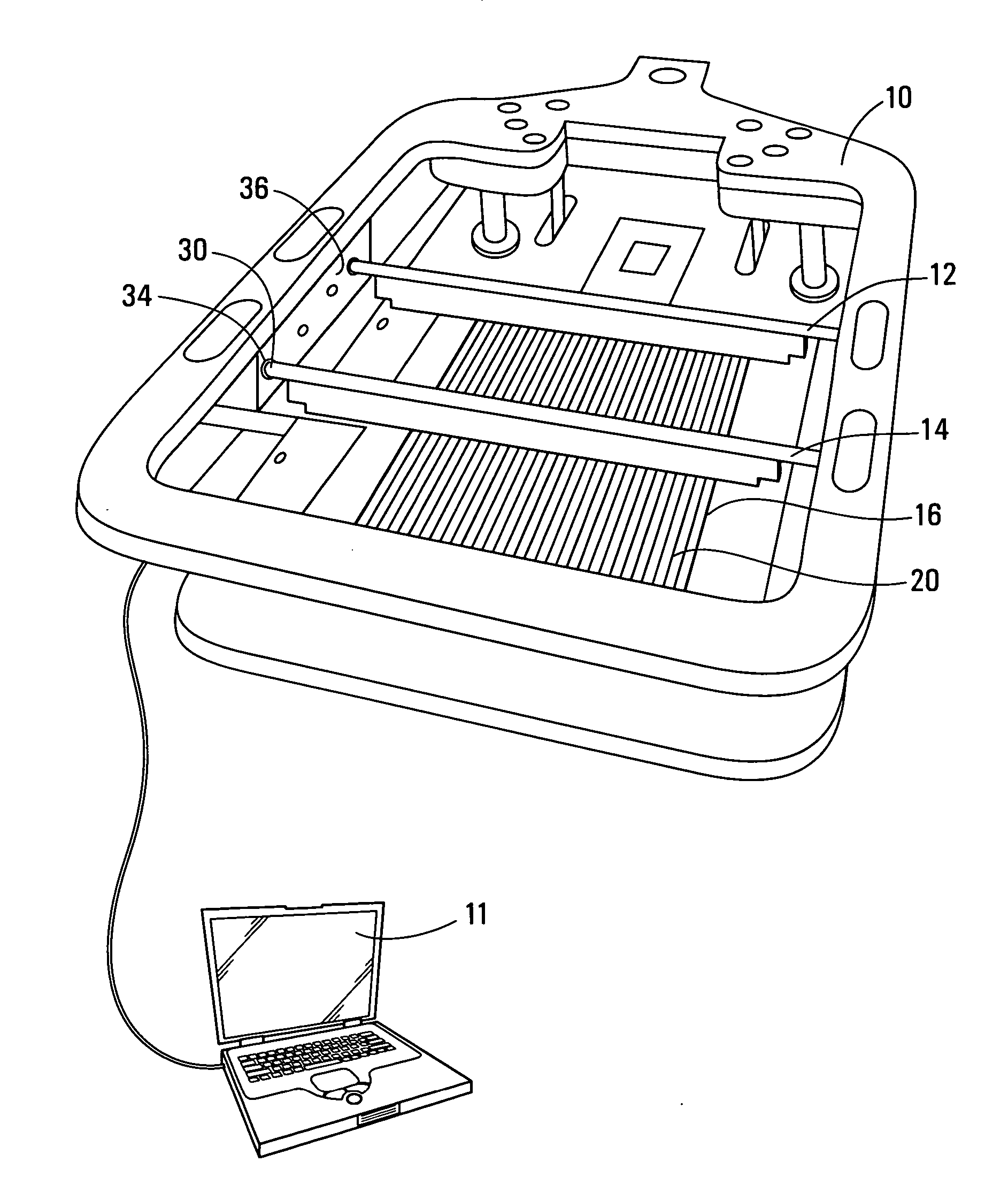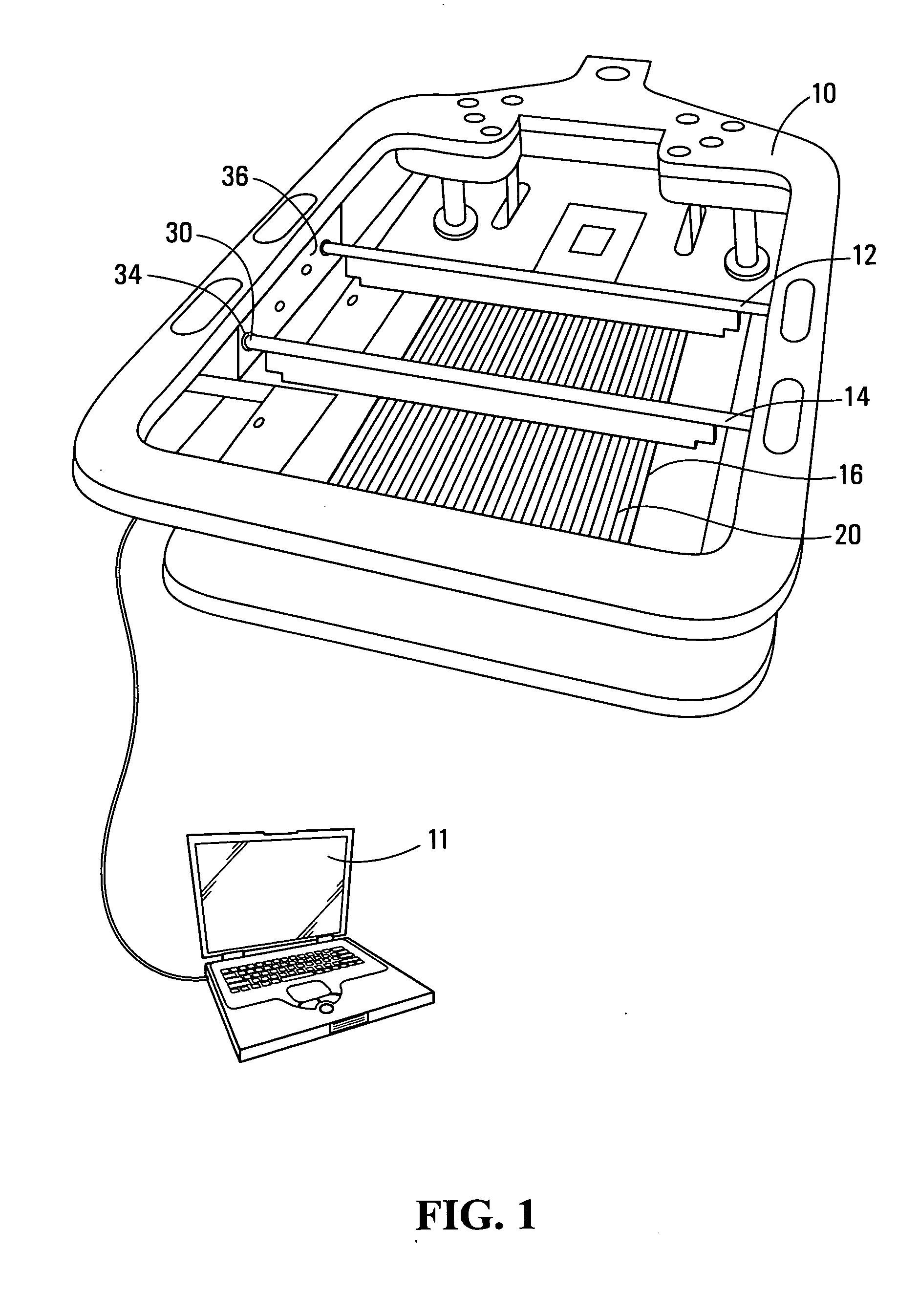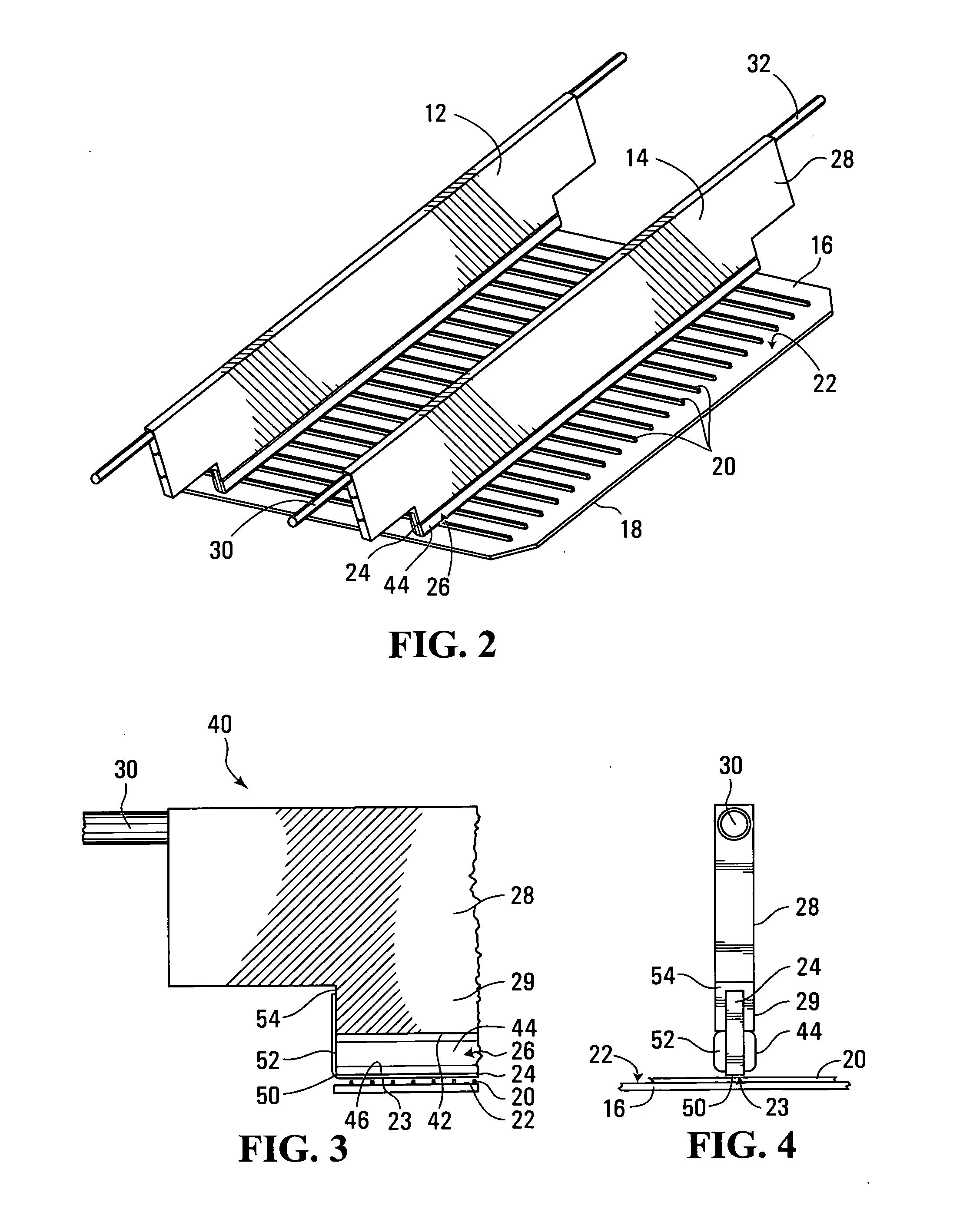Testing apparatus and method for solar cells
a solar cell and test apparatus technology, applied in electrical apparatus, photovoltaic energy generation, photovoltaics, etc., can solve the problems of not being practicable to use the plurality of contact heads to contact isolated screen printed fingers, affecting the p-n junction under its surface, and not being able to test conventional front contact silicon crystalline solar cells. , to achieve the effect of efficient us
- Summary
- Abstract
- Description
- Claims
- Application Information
AI Technical Summary
Benefits of technology
Problems solved by technology
Method used
Image
Examples
Embodiment Construction
[0058] Referring to FIG. 1, a contacting station for solar cells is shown generally at 10. The contacting station 10 is, in this embodiment, a cetisPV-Contact1 contacting station for solar cells produced by H.A.L.M. Electronik GmbH, Sandweg 30-32, D-60316, Frankfurt am Main, of Germany and is connected to a solar cell test station 11. The contacting station 10 is conventional, with the exception of first and second apparatuses 12 and 14 that are specially designed for testing an isolated finger type solar cell 16 that does not employ integral bus bars for current gathering, but which are readily usable to alternatively test non-isolated finger type solar cells that do employ integral bus bars for current gathering.
[0059] The contacting station 10 is conventional and is normally intended for use in testing conventional solar cells that have a plurality of fingers that are electrically connected together by a bus bar permanently formed on the surface of the solar cell. The apparatuse...
PUM
 Login to View More
Login to View More Abstract
Description
Claims
Application Information
 Login to View More
Login to View More - R&D
- Intellectual Property
- Life Sciences
- Materials
- Tech Scout
- Unparalleled Data Quality
- Higher Quality Content
- 60% Fewer Hallucinations
Browse by: Latest US Patents, China's latest patents, Technical Efficacy Thesaurus, Application Domain, Technology Topic, Popular Technical Reports.
© 2025 PatSnap. All rights reserved.Legal|Privacy policy|Modern Slavery Act Transparency Statement|Sitemap|About US| Contact US: help@patsnap.com



